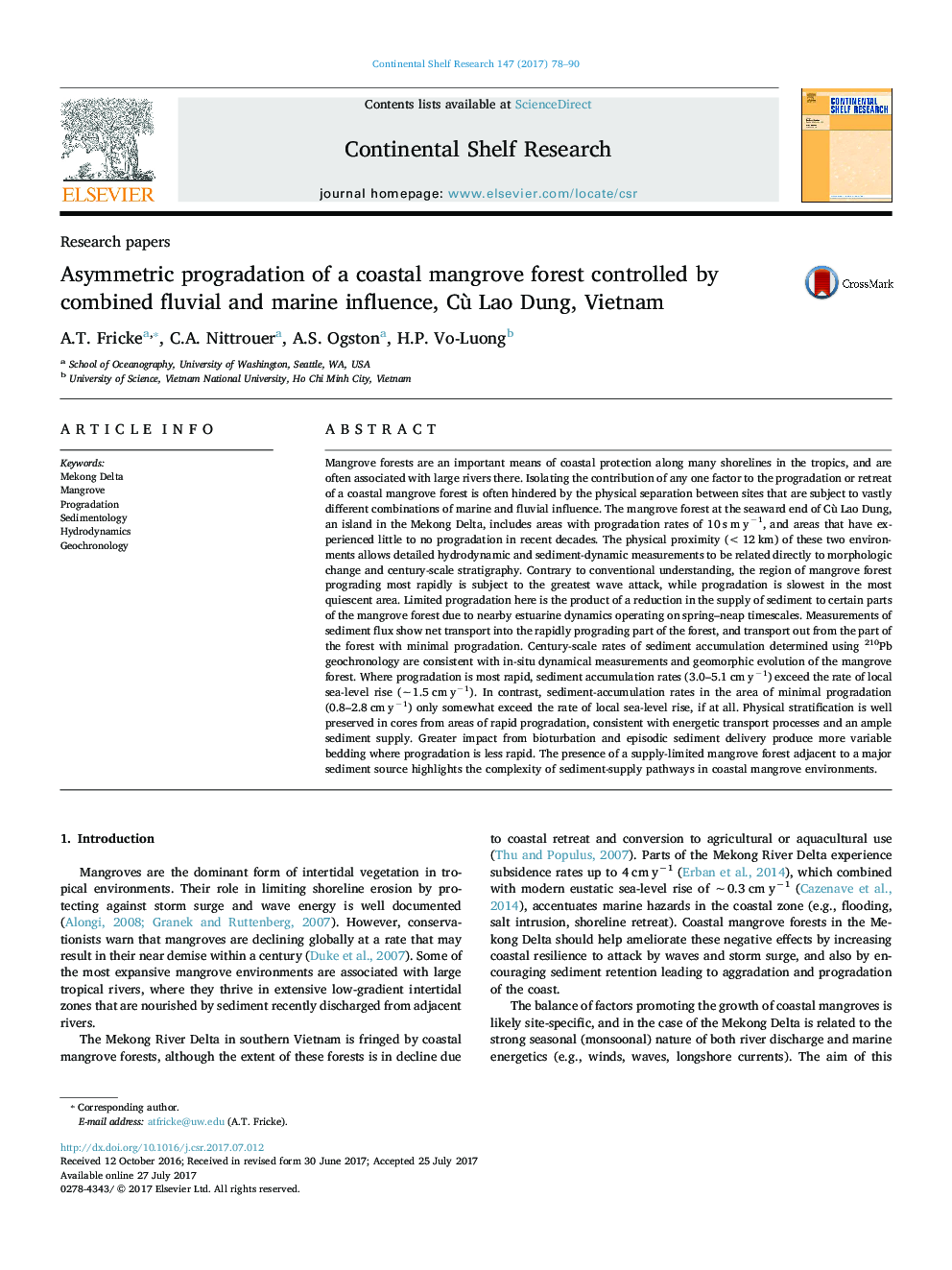| کد مقاله | کد نشریه | سال انتشار | مقاله انگلیسی | نسخه تمام متن |
|---|---|---|---|---|
| 5764366 | 1626066 | 2017 | 13 صفحه PDF | دانلود رایگان |

- Sediment supply to mangroves is out of phase with Mekong River sediment discharge.
- Progradation is most rapid where sediment supply and wave energy are greatest.
- Estuarine dynamics in distributaries alter sediment supply to coastal mangroves.
Mangrove forests are an important means of coastal protection along many shorelines in the tropics, and are often associated with large rivers there. Isolating the contribution of any one factor to the progradation or retreat of a coastal mangrove forest is often hindered by the physical separation between sites that are subject to vastly different combinations of marine and fluvial influence. The mangrove forest at the seaward end of Cù Lao Dung, an island in the Mekong Delta, includes areas with progradation rates of 10 s m yâ1, and areas that have experienced little to no progradation in recent decades. The physical proximity (<12 km) of these two environments allows detailed hydrodynamic and sediment-dynamic measurements to be related directly to morphologic change and century-scale stratigraphy. Contrary to conventional understanding, the region of mangrove forest prograding most rapidly is subject to the greatest wave attack, while progradation is slowest in the most quiescent area. Limited progradation here is the product of a reduction in the supply of sediment to certain parts of the mangrove forest due to nearby estuarine dynamics operating on spring-neap timescales. Measurements of sediment flux show net transport into the rapidly prograding part of the forest, and transport out from the part of the forest with minimal progradation. Century-scale rates of sediment accumulation determined using 210Pb geochronology are consistent with in-situ dynamical measurements and geomorphic evolution of the mangrove forest. Where progradation is most rapid, sediment accumulation rates (3.0-5.1 cm yâ1) exceed the rate of local sea-level rise (â¼1.5 cm yâ1). In contrast, sediment-accumulation rates in the area of minimal progradation (0.8-2.8 cm yâ1) only somewhat exceed the rate of local sea-level rise, if at all. Physical stratification is well preserved in cores from areas of rapid progradation, consistent with energetic transport processes and an ample sediment supply. Greater impact from bioturbation and episodic sediment delivery produce more variable bedding where progradation is less rapid. The presence of a supply-limited mangrove forest adjacent to a major sediment source highlights the complexity of sediment-supply pathways in coastal mangrove environments.
Journal: Continental Shelf Research - Volume 147, 1 September 2017, Pages 78-90